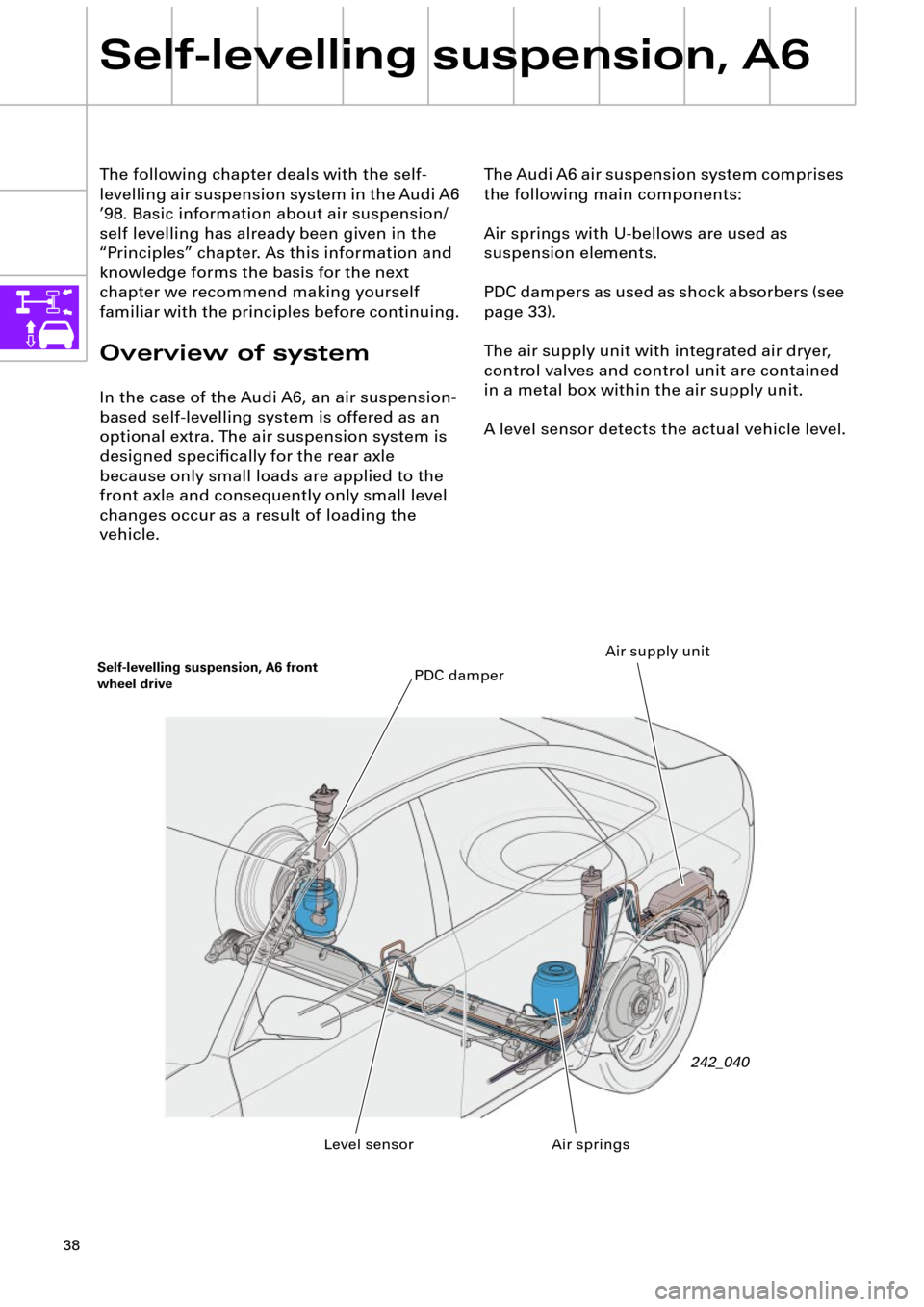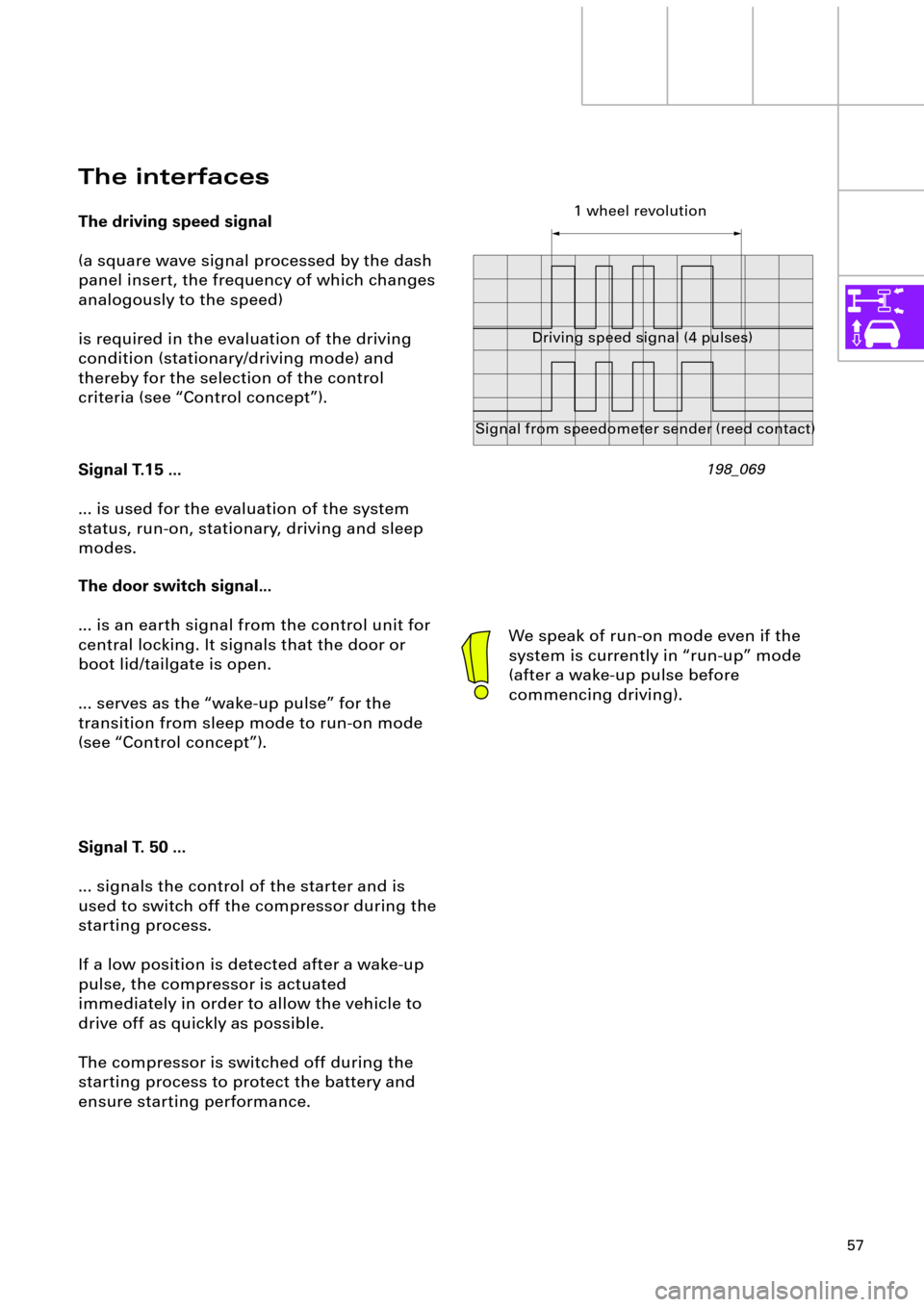Page 16 of 64
16
Principles of air suspension
Self-levelling air
suspension
Air suspension is a controllable form of
vehicle suspension.
With air suspension, it is simple to achieve
self-levelling and it is therefore generally
integrated into the system.
The basic advantages of self-levelling are:
¥ Static compression remains the same,
irrespective of vehicle loads (see overleaf).
The space requirement in the wheel
arches for free wheel movement kept to a
minimum, which has beneÞts for the
overall use of available space.
¥ The vehicle body can be suspended more
softly, which improves driving comfort.
¥ Full compression and rebound travel is
maintained, whatever the load.
242_074
¥ Ground clearance is maintained, whatever
the load.
¥ There are no track or camber changes
when vehicle is laden.
¥ The c
w value is maintained, as is the visual
appearance.
¥ Less wear to ball joints due to reduced
working angle.
¥ Greater loads are possible if required.
= constant
Page 38 of 64

38
The Audi A6 air suspension system comprises
the following main components:
Air springs with U-bellows are used as
suspension elements.
PDC dampers as used as shock absorbers (see
page 33).
The air supply unit with integrated air dryer,
control valves and control unit are contained
in a metal box within the air supply unit.
A level sensor detects the actual vehicle level. The following chapter deals with the self-
levelling air suspension system in the Audi A6
Õ98. Basic information about air suspension/
self levelling has already been given in the
ÒPrinciplesÓ chapter. As this information and
knowledge forms the basis for the next
chapter we recommend making yourself
familiar with the principles before continuing.
Overview of system
In the case of the Audi A6, an air suspension-
based self-levelling system is offered as an
optional extra. The air suspension system is
designed speciÞcally for the rear axle
because only small loads are applied to the
front axle and consequently only small level
changes occur as a result of loading the
vehicle.
Self-levelling suspension, A6
Self-levelling suspension, A6 front
wheel drive
242_040
Air springs PDC damper
Level sensorAir supply unit
Page 57 of 64

57
The interfaces
The driving speed signal
(a square wave signal processed by the dash
panel insert, the frequency of which changes
analogously to the speed)
is required in the evaluation of the driving
condition (stationary/driving mode) and
thereby for the selection of the control
criteria (see ÒControl conceptÓ). 1 wheel revolution
Signal T.15 ...
... is used for the evaluation of the system
status, run-on, stationary, driving and sleep
modes.
Signal T. 50 ...
... signals the control of the starter and is
used to switch off the compressor during the
starting process.
If a low position is detected after a wake-up
pulse, the compressor is actuated
immediately in order to allow the vehicle to
drive off as quickly as possible.
The compressor is switched off during the
starting process to protect the battery and
ensure starting performance. The door switch signal...
... is an earth signal from the control unit for
central locking. It signals that the door or
boot lid/tailgate is open.
... serves as the Òwake-up pulseÓ for the
transition from sleep mode to run-on mode
(see ÒControl conceptÓ).
Driving speed signal (4 pulses)
Signal from speedometer sender (reed contact)
We speak of run-on mode even if the
system is currently in Òrun-upÓ mode
(after a wake-up pulse before
commencing driving).
198_069